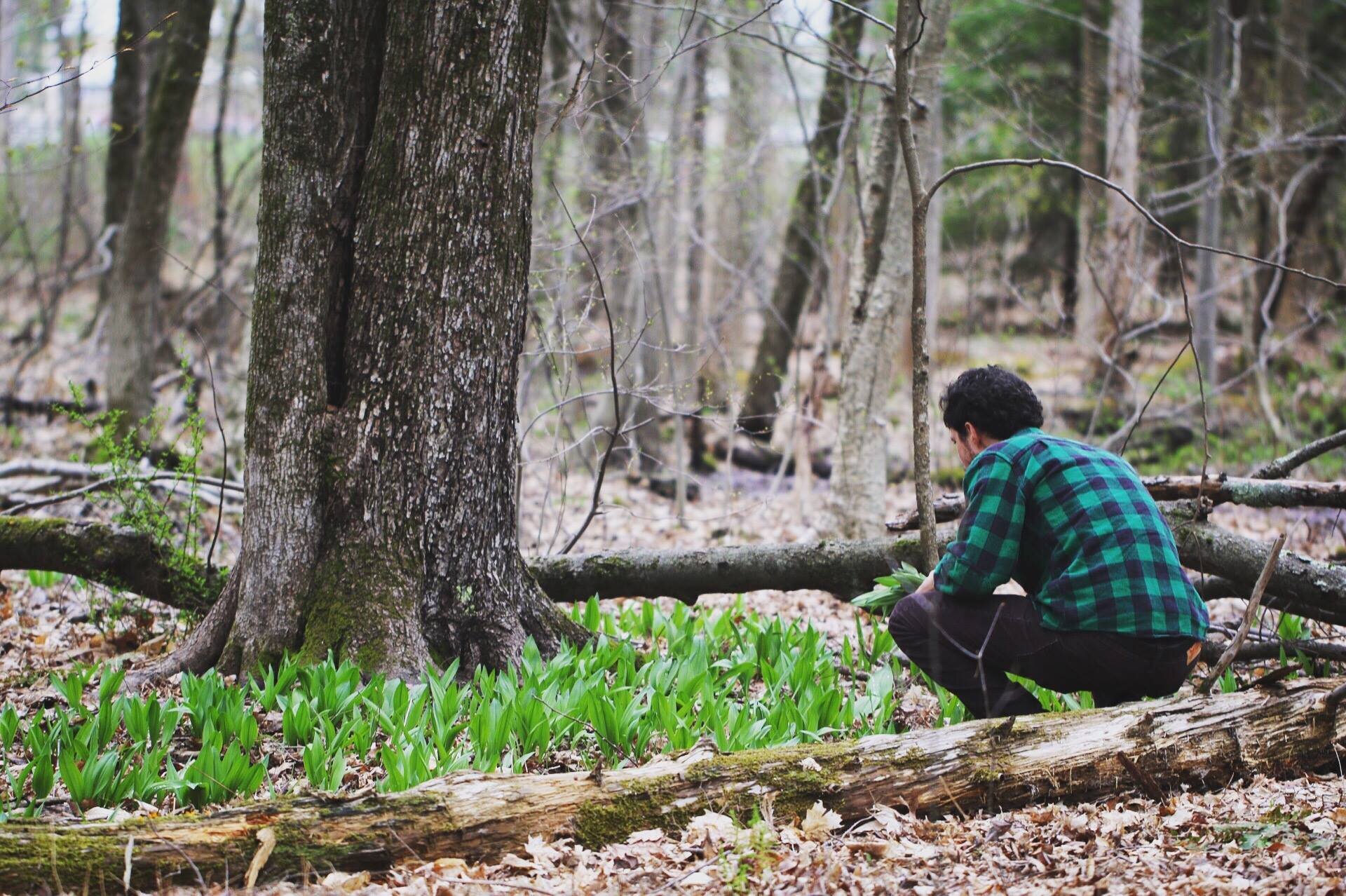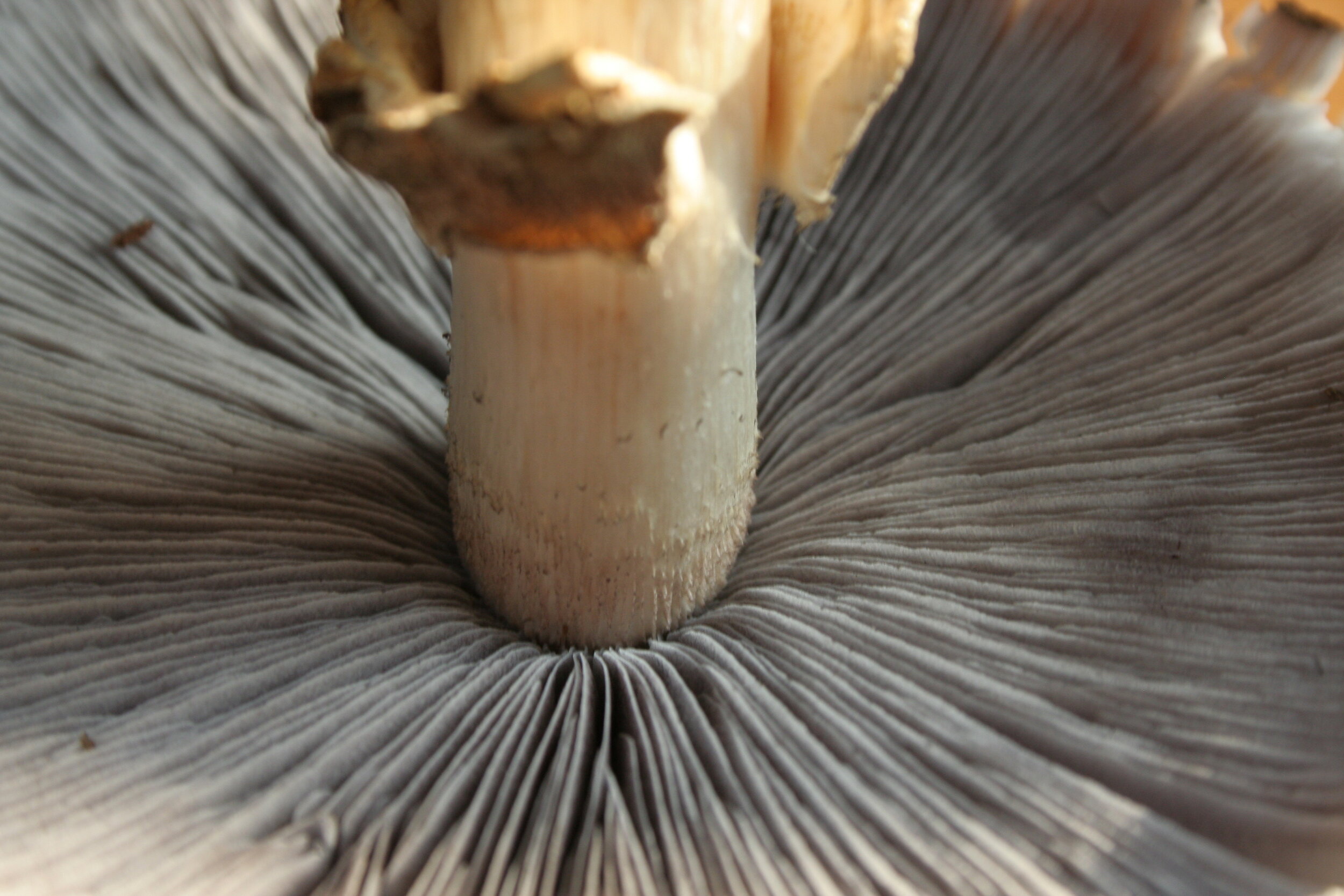
Blog
King Stropharia Risotto with White Wine, Parsley & Roasted Ancho Chiles
Sometimes the best meals emerge spontaneously from circumstance. Yesterday we had two foraging finds: king stropharia mushrooms in the parking lot of one of our favorite local hiking trails, and over three pounds of ancho chiles growing beneath the weeds in our second, abandoned community garden plot. We went to the hiking spot with the intention of searching for hedgehog and lion’s mane mushrooms deep in the woods, equipped with camera, knife, and basket. Before even stepping out of the car, we noticed a pound of gorgeous strophs basking in the sun. These turned out to be our only find of the hike; sometimes you don’t have to travel far to find the best mushrooms!
Lion's Mane: A Foolproof Fungus
When not overripe, lion’s mane has a delicate seafoody flavor and sublime texture that reminds me of scallops. Cooking it perfectly takes practice, however. I like it best sautéed in butter and garlic on a medium heat, until it gets just slightly brown and crispy on the tips. Today’s lion’s mane I sautéed with sliced local apples in ginger, garlic, and butter. Yum! All lion’s mane species are very absorbent, so specimens should be squeezed out like a sponge after washing (or not washed at all if fairly clean when found). The mushroom holds up to a good wringing out surprisingly well, whereas sautéing wet lion’s mane spoils the texture.
Amanitas: From Deadly to Delicious
Amanitas are the terciopelos of the kingdom of fungi. Though the genus only accounts for a small percentage of all mushroom species, it contains some of the most ubiquitous and deadly, making it the culprit for 90% of deaths caused by mushroom poisoning. The vast majority of these deaths are from the destroying angel or death cap, both of which look meatier and more appetizing than most other deadly mushrooms, such as Galerina autumnalis, a nondescript LBM (little brown mushroom). A disproportionate number of people who die of Amanita poisoning in the United States are Southeast or East Asian immigrants, as the death cap bears more than a passing resemblance to the paddy straw mushroom (Volvariella volvacea) popular in their homeland.
In Pursuit of the Porcini
Once again, the maggots have beaten me to the porcinis. Jenna found the first lone porcini over the weekend, on a hike with a friend from our undergraduate years. With whiteish pores and a plump, reticulate stem, I immediately knew this was the prized cep, or king bolete (Boletus edulis). “Seeing is Boleting,” as the mushroom hunter’s adage goes, and once we were aware of the porcini presence, we all started to spot them with some regularity throughout the trail. Most were growing alone or with one or two comrades, though we discovered one goldmine of a hillside that was littered with small, early specimens. This spot too began as a single porcini, but as we glanced down the slope and focused our vision we began to notice many small caps barely lifting up the leaf litter on the forest floor. All were young, appearing to be in pristine condition, and we picked just enough for a garnish on the whole chicken from the Ithaca Farmers’ Market that we planned to roast later that evening.
The Forager's Eyes
Fledging foragers beware: once you begin learning how to recognize edible mushrooms, you will never see the forest in the same way again. Just as growing your own vegetables for the first time changes the way you look at supermarket shelves and industrial corn fields, finding your meals in the forest alters the way you look at the landscape. This paradigm shift is empowering, even revelatory, but it can also be dangerous.
Chanterelle: Flower or Fungus?
Like maitake, the chanterelle (Cantharellus cibarius) is an extraordinarily satisfying mushroom to find. You can often spot a chanterelle patch from a distance, their brilliant egg yolk color standing out against the browns and greens of the forest. Though they can be solitary, chanterelles tend to be gregarious. Every time I discover a new patch locally, I am doubly excited. Not only do I have a meal (or several meals) – I have a producing location that I can visit again year after year, between late June and late September.
Awaiting the Maitake Dance
The venerable maitake, or hen of the woods (Grifola frondosa), is on the horizon. While bite for bite, I must concede that the morel, porcini, and black trumpet all pack more flavor, there is nothing as satisfying and rewarding as finding a massive hen roosting on the ground at the base of a living tree or stump in the fall. Maitake, prized in Japan and China for its edible, medicinal, and nutritional properties, arrives as soon as the first of September and can be found as late as early November in the Northeast. While I most frequently see them around oak trees, they can occasionally be found near maple, elm, beech, chestnut, sycamore, and black locust. After you have discovered a patch, it will reliably come back every fall for the duration of its several year life span, assuming temperatures are not too extreme and rainfall is adequate.
Artist's Conk: Canvas of the Forest
Artist’s conk (Ganoderma applanatum) is a humble but fascinating fungus. It is ubiquitous not only in the Northeast, but in the majority of American and Canadian forests and suburbs. Here is a perennial species that clearly has an effective survival strategy, and can live well over a decade. If you cut a specimen in half, the number of layers reveals the age, like tree rings.
Drought and Deliverance
Earlier this week, two consecutive evenings brought heavy, yet passing storms. The first night I sat in my screened-in porch, with its sloping floor, listening to the rain crash onto the thin aluminum roof. I blasted Bob Dylan’s “Down in The Flood” and passionately sang along, possessed by the glory and auspiciousness of the moment. It was not until 15 minutes later, when the rain suddenly slowed to a trickle, that I came to my senses and realized how bizarre it was that I was quite so excited about 95 degree, horrendously humid weather, interspersed with squalls of wind and bursts of rain. After an extended drought, during which I passed the time reading about mushrooms and fantasizing about foraging, I felt as desperate for rain as a parched plant in the desert.
From Fungi Forager to The Mushroom Forager
The Mushroom Forager emerged from a series of questions we began asking ourselves last year. Like our ancestors, could we distinguish between and safely harvest wild mushrooms, and then turn them into delicious meals? Could we significantly supplement our diets through the hunter-gatherer food chain in the modern world, and would this make us more sustainable, local eaters or merely pillagers of wild ecosystems?
blog archive by year:










